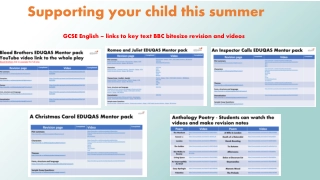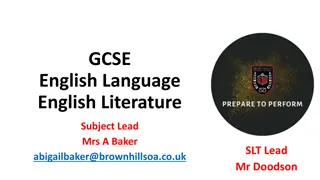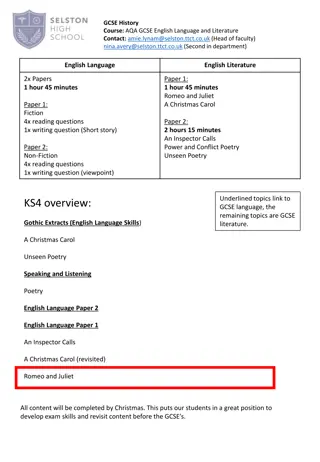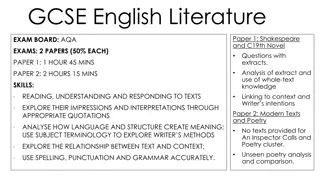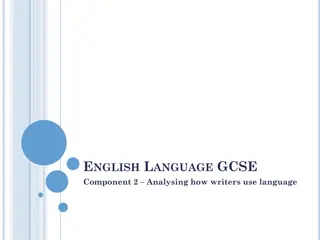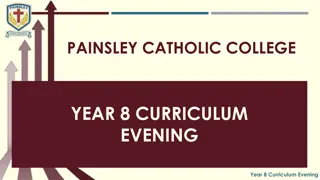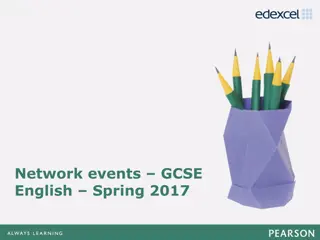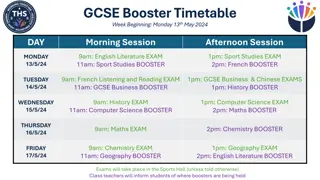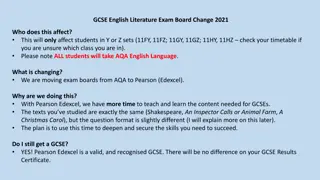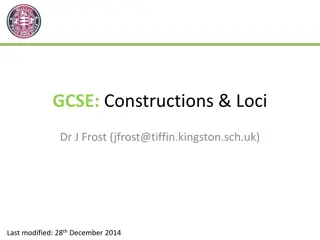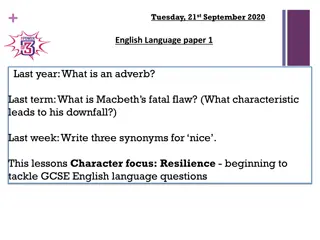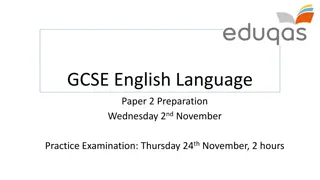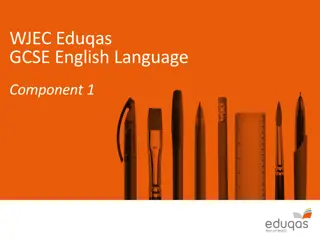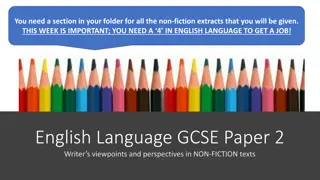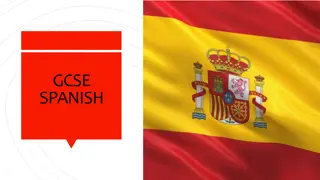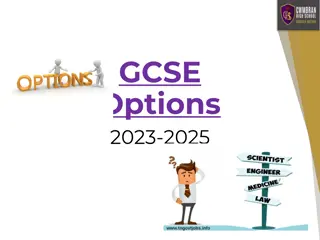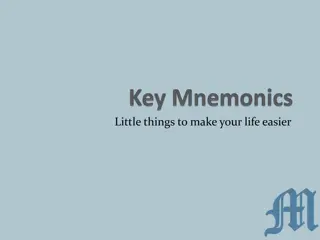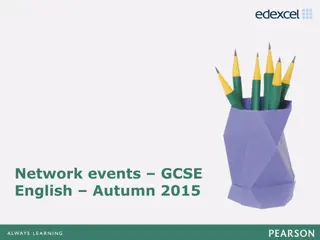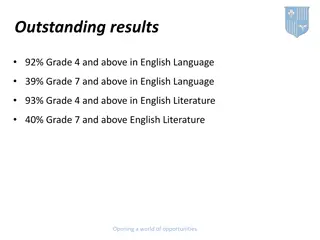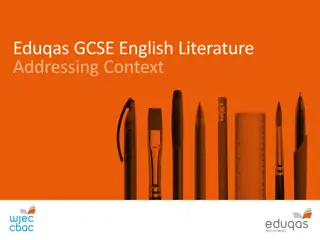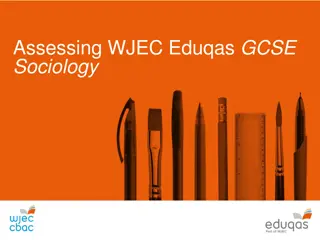Examining Language and Structure in GCSE English Language Preparation
Exploring the effective preparation strategies for GCSE English Language through language and structural analysis. Techniques for shaping meaning using evaluative words, image interpretation, and identifying key structural moments in texts are discussed and exemplified.
Download Presentation

Please find below an Image/Link to download the presentation.
The content on the website is provided AS IS for your information and personal use only. It may not be sold, licensed, or shared on other websites without obtaining consent from the author. Download presentation by click this link. If you encounter any issues during the download, it is possible that the publisher has removed the file from their server.
E N D
Presentation Transcript
LANGUAGE PAPER 1 READING @__codexterous
The most effective preparation for GCSE English Language isn t doing GCSE English Language!
Q U E S T I O N 2 ( L A N G UAG E A N A LY S I S ) How does the writer use language to shape meaning?
A total of 3 divable images that students can say multiple things about Transitional sentence stems that knit these points together like: This sense of X is further suggested by One recognises this same sense of Y in In much the same way that . Q U E S T I O N 2 ( L A N G U A G E A N A L Y S I S )
Make this routine explicit in the response: Whilst X might indicate the writer s use of Y instead suggests Unlike using X, which might imply, the choice of Y suggests Here, the use of Y suggests an action far more aggressive and violent than if the writer had used Q U E S T I O N 2 ( L A N G U A G E A N A L Y S I S )
Model evaluative words to describe the image: The highly aggressive use of Y Place a high premium on exploratory language and be relentless in modelling it Q U E S T I O N 2 ( L A N G U A G E A N A L Y S I S )
Q U E S T I O N 3 ( S T R U C T U R A L A N A LY S I S ) What is the writer showing us and why at that specific point?
A total of 3 or 4 structural moments from the text, typically: 1. where our attention is directed 2. a moment/s of perspective shift 3. where our attention concludes Transitional sentence stems that knit these points together like: This further develops the passage because The action of the passage rises when The writer then draws our attention to which culminates Q U E S T I O N 3 ( S T R U C T U R A L A N A L Y S I S )
What is our attention directed to and why? What are we then shown and why? Why does the writer zoom in on these objects? Now, what are we shown? Is it what we expected? Why does the passage zoom out? Q U E S T I O N 3 ( S T R U C T U R A L A N A L Y S I S )
Think of Q3 in terms of questions that the structure raises for the reader This revelation forces the reader to begin to consider whether This causes the reader to wonder X because At this point we begin to question X because Q U E S T I O N 3 ( S T R U C T U R A L A N A L Y S I S )
Q U E S T I O N 4 ( C R I T I C A L E VA LUAT I O N ) How do you use evidence from the text to sustain and justify an analytical point of view? Q U E S T I O N 4 ( C R I T I C A L E V A L U A T I O N )
Establish a clear point of view in relation to the given statement. Do you agree, disagree or partially agree? A total of 4 or 5 divable image that you can say multiple things about, but which supports whatever claim you made at the start. Why does this particular image make you think what you think? Transitional phrases that knit the points together, but are personally inflected: Another moment in the text that persuades me of I am also somewhat convinced of the student s argument because Whilst I do agree, perhaps X makes me question the student because Q U E S T I O N 4 ( C R I T I C A L E V A L U A T I O N )
I want them to get used to: Forming an opinion about a text Expressing why they think what they think Q U E S T I O N 4 ( C R I T I C A L E V A L U A T I O N )
Establish a point of view and sustain it: they are evaluating the statement and not the writer Use first person Helping students to form a critically evaluative response Embed evaluative language in the response aimed at both the writer and the language Refer back to the statement throughout and continue to evaluate it Language analysis supports the claim Q U E S T I O N 4 ( C R I T I C A L E V A L U A T I O N )


